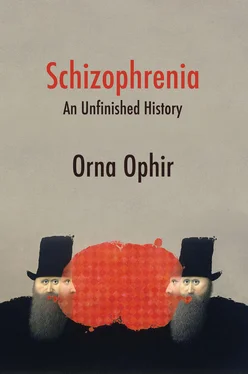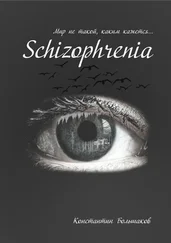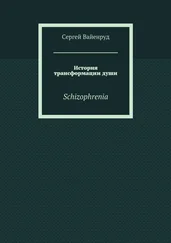Unsacred Brains and Untamed Horses: Madness in Greco-Roman Texts
I am about to discuss the disease called “sacred.” It is not, in my opinion, any more divine or more sacred than other diseases, but has a natural cause, and its supposed divine origin is due to men’s inexperience, and to their wonder at its peculiar character. (Hippocrates, The Sacred Disease )
While madness continued to be depicted as in the biblical sources as a supernaturally caused, categorically different, and “strange” phenomenon, the Greco-Roman tradition began to differentiate between madness as a form of possession, and madness as a natural affliction.
Caelius Aurelianus, a fifth century CE doctor, writes: “Plato, in the Phaedrus, declares that madness is twofold: one comes from a tension of the mind, having a cause in the body, the other is divine or sent down, and is inspired by Apollo; now we call this divination.” 30As discussed in the Introduction, in the Phaedrus , Plato’s two types of madness correspond to the duality we now understand to be at the core of the human species, namely that of body and mind (or soul), of the physical and the metaphysical, the material and the spiritual.
As we saw previously, in explaining madness as inspiration by the gods, Plato suggests that prophetic madness is inspired by Apollo, as the gift of divination; mystic madness caused by Dionysus initiates one into mysteries; poetic madness is inspired by the Muses; and, finally, the madness of love is given to humans by Aphrodite and Eros. 31Yet when madness, by contrast, is seen not as divine inspiration but as a bodily ailment, mad people are viewed as bad or shameful. 32They are kept at home, out of view of wider society, and sometimes stoned to death. 33
With the differentiation between divine, meaningful, or “good madness,” on the one hand, and “bad madness” as a pathology of the mind and the body, on the other, Greco-Roman doctors parted from philosophers, marking an epistemological juncture where madness entered the history of medicine and its changing definitions of illnesses.
As Chiara Thumiger, a classicist and historian of ancient medicine and mental diseases, has argued, in Greco-Roman traditions, madness found a clear, albeit nuanced and differentiated, physiological explanation. 34Indeed, a series of important innovations occurred during this period. First, a radically somatic interpretation of madness was offered. Second, madness became categorized as a bodily disease that is part of a more general classification of natural phenomena. And, finally, an approach to madness appeared that was both physiological and ethical. Indeed, according to the dominant view in this period of late Antiquity, mental health and soundness were thought to be achieved by maintaining a modicum of spiritual and ethical integrity.
In the medical corpus of Hippocratic texts from the fifth to fourth centuries BCE, madness is clearly framed not in divine or sacred but in naturalistic terms, as a manifestation of bodily dysfunction. At the time, the body’s functions were believed to rely on the four so-called humors or fluids, and their associated qualities: blood (which is hot and wet), yellow bile or choler (which is hot and dry), black bile (which is cold and dry) and, finally, phlegm (which is cold and wet). The condition of the humors and their overall corporeal balance were thought to relate both to macrocosmic factors (such as the seasons or the position of the celestial bodies) and to microcosmic elements in each individual. According to this model, when the humors or fluids are in a good temperament, good mixture, or balance ( eukrasia ), this is conducive to good health. An imbalance ( dyskrasia ) or bad mixture of the humors, on the other hand, harms the wellbeing of humans and causes disease.
Health and illness were thus seen not as categorically distinct or different in kind, but as existing on a spectrum . They were understood as a function of relative states of greater or lesser equilibrium of the different building blocks that constituted not only the human organism, but also the whole universe. These extended beyond the humors, to the four elements (earth, air, fire, and water); the four seasons (summer, fall, winter, and spring); the four qualities (hot, cold, wet, and dry); and the four temperaments, or mental states (sanguine, choleric, melancholic, and phlegmatic). Since the body was deemed to be subject to numerous influences, it was thought to oscillate constantly between health and illness. This rationale for understanding human beings set sickness and health on a continuous scale, ranging between imbalance and balance, too much or too little, of the quantity of a substance and its power, rather than opposing them as two distinct categories. Maintaining the body’s dynamic equilibrium (between extremes), keeping its internal substances in well-proportioned mixture, was considered an important part of people’s daily routine. More specifically, while the management of health involved a constant recalibration of an ideal state of humoral balance, the treatment of disease was directed at restoring it.
Furthermore, as Roy Porter observed, Greek medicine postulated that health and illness were “organic” or “constitutional,” deriving not from an external pathogen, but from inner processes. The inside of the body and the mind were seen as interconnected, so that the body affected the mind (e.g., fever causes delirium) and the mind affected the body. Intense emotions, for example, were thought to be responsible for a myriad of physical disorders, ranging from respiratory diseases to rheumatism, even death. A broken heart or a great fright, in this context, was seen as lethal.
Madness was thus seen as rooted in the individual, in the person’s body and mind. For example, in Hysteria in Virgins , Hippocrates observes a young female patient and writes: “When these places are filled with blood, shivering sets in with fever … when this is the state of affairs, the girl goes crazy because of the violent inflammation.” 35
In this case, the afflicted girl is understood to have become murderous, fearful, distraught, and anxious because of the bad condition of her blood. She says dreadful things and has visions that tell her to kill herself, she has a desire for death “as if it was a form of good.” 36According to the Hippocratic texts, the abundance of blood, when it rushes up to the heart and to the lungs, is understood to create insanity in women. In this case, unlike other parts of the body (where the veins are straight and the blood flows quickly), the veins in the heart and the phrenes are slanted, and thus form “a critical place for insanity and suited for madness.” 37
The Hippocratic text The Sacred Disease also identifies the source of madness in the brain, mocking the idea that some forms of madness are divine. 38Here, the brain is seen as responsible for emotions such as joy, delight, sorrow, grief, and despondency. It is also considered as the seat of intellect, wisdom, and knowledge. When the brain, which is dry and cold while healthy, becomes moist, it makes us “mad and delirious.” In this case, it can inspire fear, sleeplessness, aimless anxieties, absentmindedness, and “acts that are contrary to habit.” 39
The Hippocratic Corpus thus offers a coherent representation of mental disorders. 40According to the Hippocratic doctors, mental disturbances are embodied and visible. Madness can be seen on patients’ faces, in their movements, their postures and gestures, their eating behaviors, sleep, and sexuality. Madness is also diagnosed based on patients’ reports about their disturbed sensations and perceptions. Finally, mental disturbance can be seen in the emotional responses of the patient, their ability to reason, and their – at times extraordinary – behavior. 41
Читать дальше












